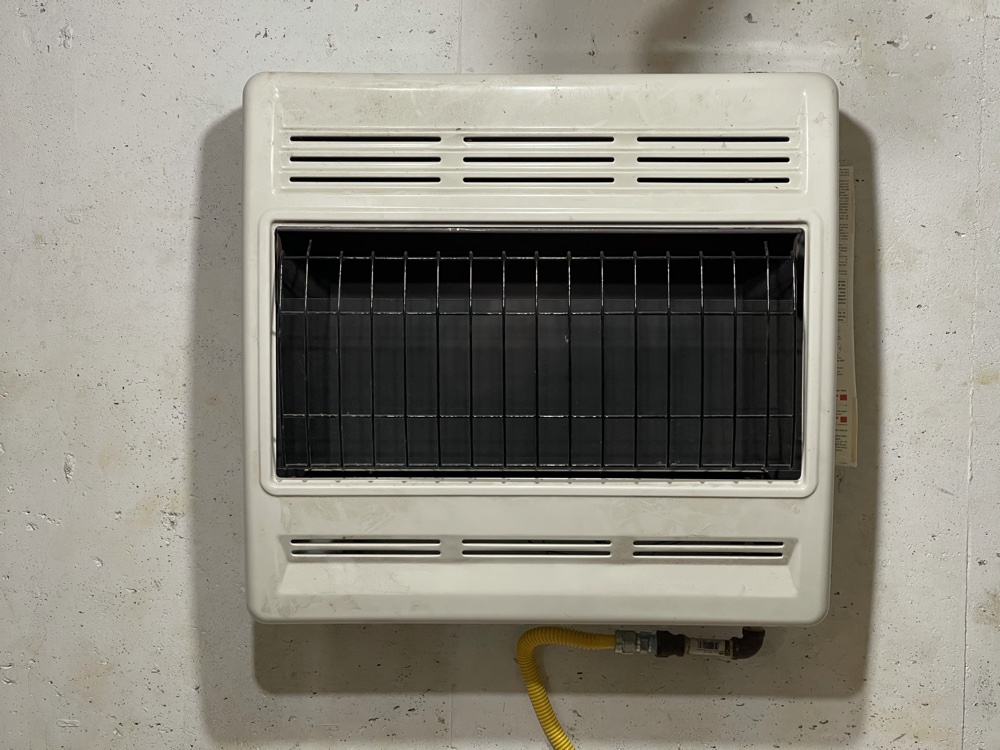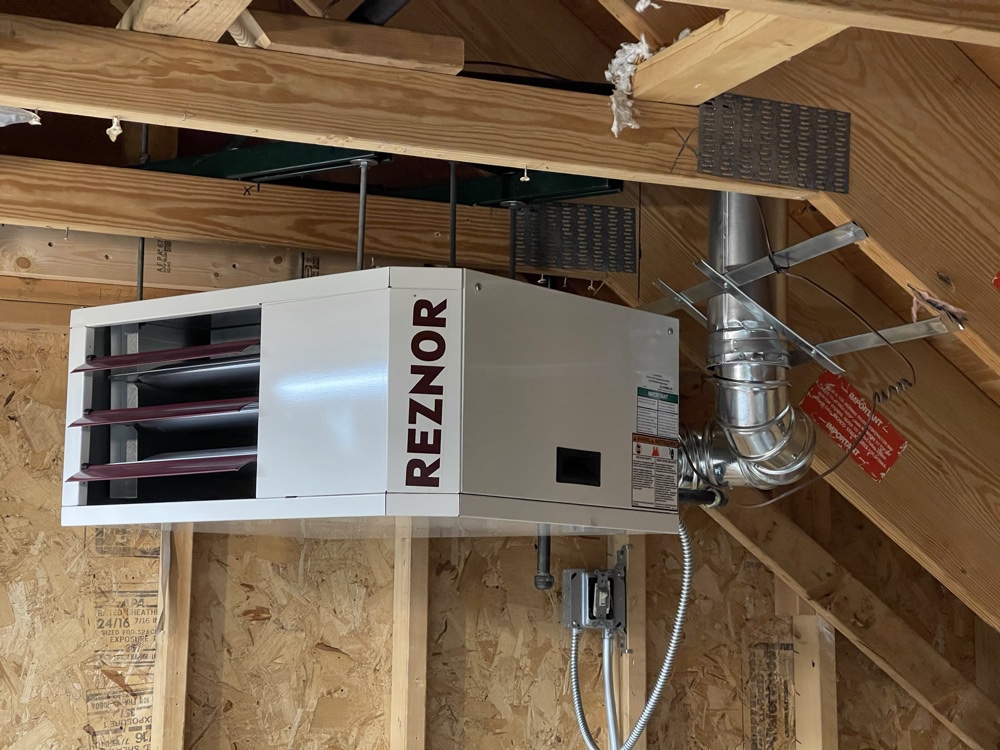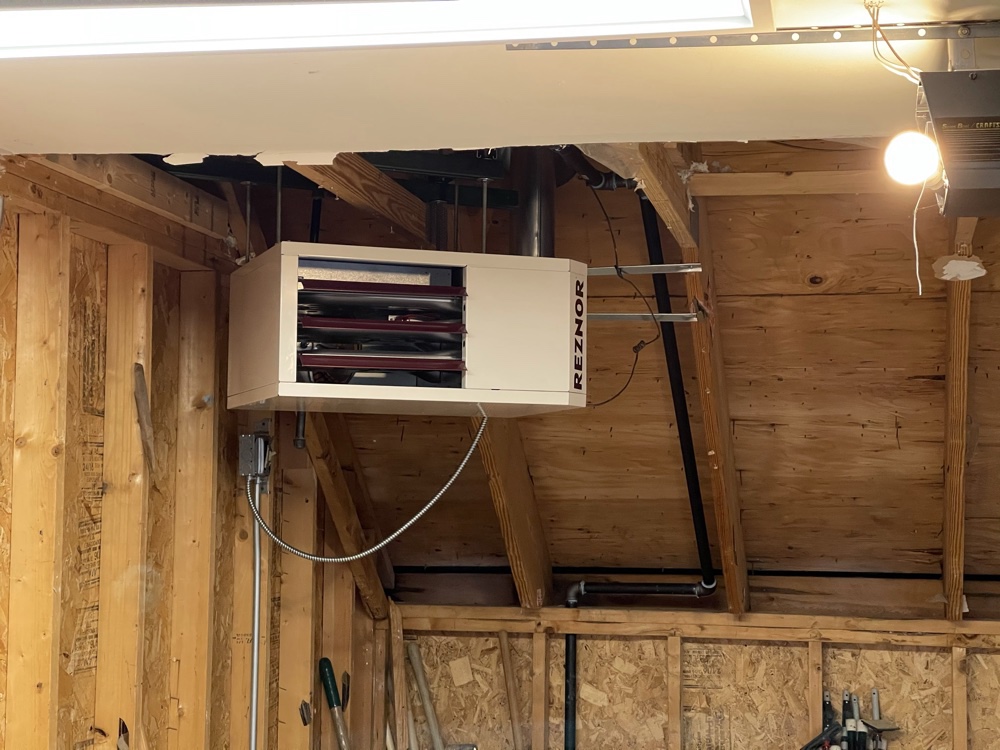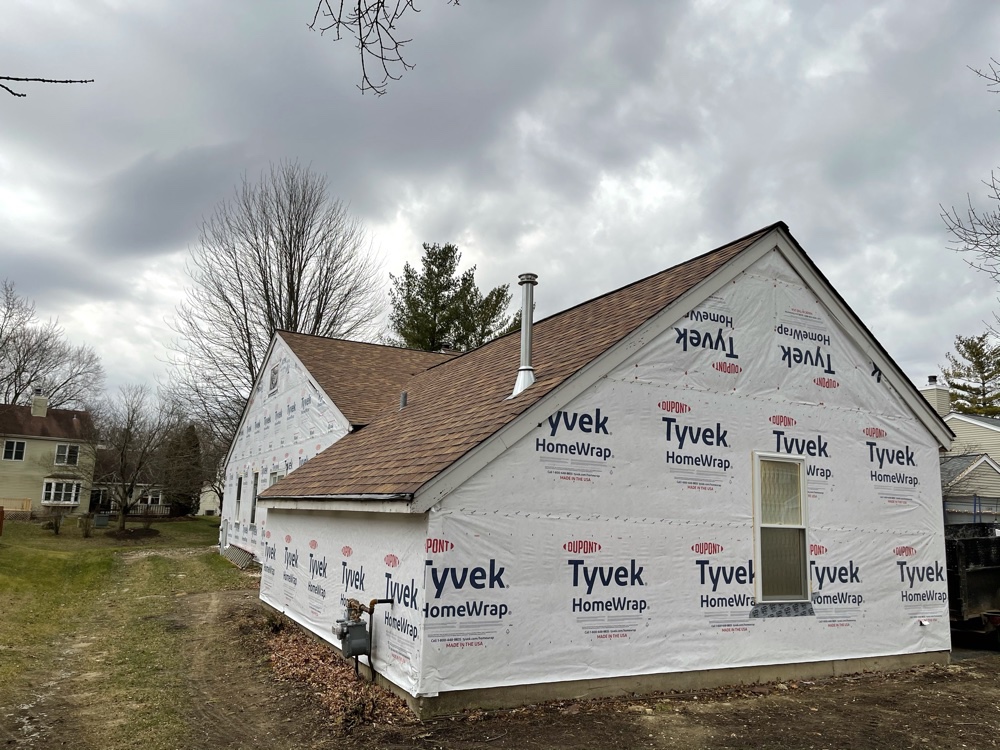I added a garage heater at my townhouse project and I thought I would share some ideas with you about the pros and cons of various heater types.
Gas heaters use either natural gas (which is mostly methane) or propane. These gases can burn very cleanly and in a perfect situation, they produce heat, water, and carbon dioxide. All of these products are harmless to humans. However, if the gas is not completely combusted it can produce poisonous carbon monoxide. This odorless and tasteless gas can prevent you from utilizing oxygen. In other words, it can slowly suffocate you.
Gas furnaces come in two basic varieties, vented and ventless. A ventless furnace is cheaper and easier to install. In a perfect situation, a ventless heater is over 99% efficient and produces very little carbon monoxide. These heaters are passive in that they don’t have a fan. The heat is produced by using the room air (oxygen) and fuel. This means that these heaters can deplete the oxygen in the room. In addition, if they are not in perfect condition that can produce too much carbon monoxide. However, they can be a safe option in areas that have enough airflow, and if they are properly maintained.
I chose to go with a safer option, a traditional garage furnace. This type of furnace is similar to the ones that you would use to heat your home. The heating chamber is separated and vented to the outside. This means that gasses, including any carbon monoxide, are vented into the atmosphere. The box heats up the room air via a heat exchanger, and a fan is used to push the hot air into the room. These types of heaters are more complicated and usually require a professional set-up. This makes them more expensive, but they are safer.
Always follow your manufacturers directions when installing and using any heat source. Carbon monoxide kills.



